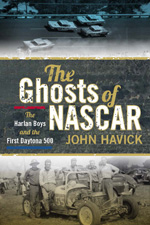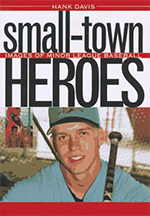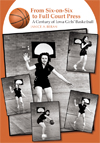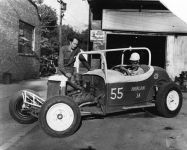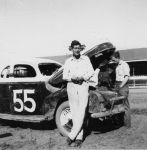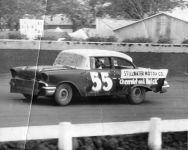The Ghosts of NASCAR
when prompted by shopping cart
“Dale Swanson was a top race mechanic, careful and creative. Tiny Lund was a good, ferocious competitor, particularly on dirt tracks, and Johnny Beauchamp in fewer than thirty races proved he could race and win against the top NASCAR drivers. This book describes how these three learned to compete on midwestern tracks. . . . It is a story not to be missed.”—Rex White, 1960 NASCAR Grand National Champion
"Havick's engaging and well-written book will appeal to both racing fans and to students of popular culture, for he skillfuly situates the origins of contemporary stock racing within the social and economic culture of postwar America."—Journal of American Culture
“A detailed account of stock car racing’s overlooked pre-TV days, a simpler era when a big-hearted, lead-footed, small-town midwestern boy could reach NASCAR’s top tiers. This is more than an investigation of the controversial first Daytona 500. It’s the story of the sport’s coming of age.”—Neal Thompson, author, Driving with the Devil: Southern Moonshine, Detroit Wheels, and the Birth of NASCAR
“John Havick has written an important, informative account of the early days of racing in the Midwest. He focuses on the life and times of Iowan Johnny Beauchamp, the Ghost of Playland Park, the declared victor of the very first Daytona 500—until NASCAR czar Bill France and racing legend Lee Petty conspired to cheat him out of his victory. The Ghosts of NASCAR is a winner.”—Peter Golenbock, author, American Zoom, The Last Lap, and NASCAR Confidential
Who won the first Daytona 500? Fans still debate whether it was midwestern champion Johnny Beauchamp, declared the victor at the finish line, or longtime NASCAR driver Lee Petty, declared the official winner a few days after the race. The Ghosts of NASCAR puts the controversial finish under a microscope. Author John Havick interviewed scores of people, analyzed film of the race, and pored over newspaper accounts of the event. He uses this information and his deep knowledge of the sport as it worked then to determine what probably happened. But he also tells a much bigger story: the story of how Johnny Beauchamp—and his Harlan, Iowa, compatriots, mechanic Dale Swanson and driver Tiny Lund—ended up in Florida driving in the 1959 Daytona race.
The Ghosts of NASCAR details how the Harlan Boys turned to racing cars to have fun and to escape the limited opportunities for poor boys in rural southwestern Iowa. As auto racing became more popular and better organized in the 1950s, Swanson, Lund, and Beauchamp battled dozens of rivals and came to dominate the sport in the Midwest. By the later part of the decade, the three men were ready to take on the competition in the South’s growing NASCAR circuit. One of the top mechanics of the day, Swanson literally wrote the book on race cars at Chevrolet’s clandestine racing shop in Atlanta, Georgia, while Beauchamp and Lund proved themselves worthy competitors. It all came to a head on the brand-new Daytona track in 1959.
The Harlan Boys’ long careers and midwestern racing in general have largely faded from memory. The Ghosts of NASCAR recaptures it all: how they negotiated the corners on dirt tracks and passed or spun out their opponents; how officials tore down cars after races to make sure they conformed to track rules; the mix of violence and camaraderie among fierce competitors; and the struggles to organize and regulate the sport. One of very few accounts of 1950s midwestern stock car racing, The Ghosts of NASCAR is told by a man who was there during the sport’s earliest days.


